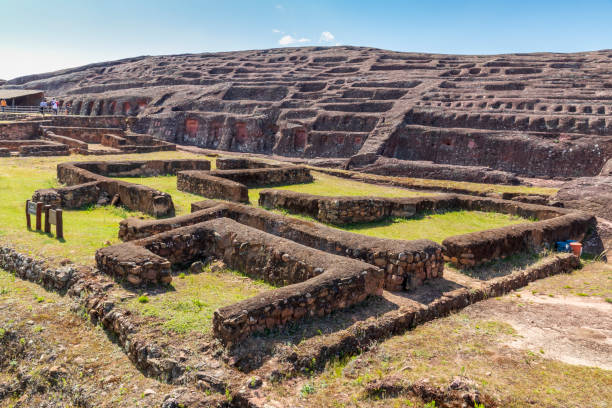The Affenpinscher Dog: History, Traits, Temperament, Health, Grooming, Training, and Complete Care Guide for Owners
The world of dog breeds is vast and filled with fascinating personalities, physical characteristics, and unique histories, but few dogs combine charm, humor, and tenacity quite like the Affenpinscher. Often referred to as the “monkey terrier” due to its simian facial expressions and curious demeanor, the Affenpinscher is a breed that captures attention not through size but through spirited personality and a distinctive look. Despite its diminutive stature, this little dog carries the confidence of a much larger canine, offering companionship, loyalty, and entertainment in equal measure. We explore everything you need to know about the Affenpinscher—from its storied past to its modern-day role as a companion animal in homes across the globe.

Origins and Historical Background
The Affenpinscher’s origins can be traced back to Germany in the 17th century, making it one of the older toy breeds in existence. Its name is derived from the German word “Affen,” meaning “monkey,” which is a nod to its simian-like face. Though the breed as we know it today was standardized later in the 19th century, historical records and paintings from earlier periods show small, rough-coated dogs that bear a striking resemblance to the modern Affenpinscher.
Originally bred for a utilitarian purpose, the Affenpinscher was not a lapdog at first. These small terriers were valued for their ability to control vermin populations, particularly rats and mice, in kitchens, granaries, and stables. Their size allowed them to dart into small spaces, and their bold temperament made them effective hunters. Eventually, their appealing appearance and quirky personalities earned them a spot indoors as companions to ladies in the upper classes, and selective breeding began to miniaturize and refine them for that purpose.
The Affenpinscher is also believed to have contributed genetically to the development of other toy breeds such as the Brussels Griffon and the Miniature Schnauzer, particularly due to its prominent facial hair and expressive eyes.
The breed was first officially recognized by the German Kennel Club in the late 1800s. It made its way to France and other European countries, where it was similarly appreciated. The American Kennel Club (AKC) officially recognized the Affenpinscher in 1936, though it remained relatively rare in the United States for many decades. Its popularity saw a resurgence in 2013 when an Affenpinscher named “Banana Joe” won Best in Show at the prestigious Westminster Kennel Club Dog Show.

Physical Characteristics and Breed Standard
Despite being part of the Toy Group, the Affenpinscher is a compact and sturdy little dog. The breed is square-proportioned, muscular, and surprisingly agile for its size. According to the AKC and other international standards, the ideal height at the withers is between 9 to 11.5 inches (23 to 29 cm), and they typically weigh between 6.5 to 13 pounds (3 to 6 kg).
Head and Expression
The Affenpinscher’s head is perhaps its most iconic feature. With a short, domed skull, large round dark eyes, and a short muzzle, the breed gives off a mischievous, almost human-like expression. The bushy eyebrows and long mustache that frames the face contribute significantly to the “monkey-like” appearance for which it is known. Ears are set high and may be either cropped to stand erect or left natural, in which case they may fold over.
Coat and Color
Affenpinschers have a dense, harsh, wiry coat that covers their entire body, forming a cape around the shoulders and neck and a fringe around the head. The texture is important—it must not be soft or overly long. Regular grooming is required to maintain its texture and shape, often through hand-stripping. Accepted coat colors include black, which is the most common, but other colors like gray, silver, red, and black and tan are also permitted by various breed clubs worldwide.
Body and Tail
The body of the Affenpinscher is compact and well-balanced, with a level topline and a short back. The chest is deep, reaching the elbows. The tail is often docked in countries where the practice is legal, but when left natural, it is typically carried high and curves slightly over the back, giving an alert and happy appearance.
Gait and Movement
Though small, the Affenpinscher moves with purpose and coordination. Its gait is confident, with a lively stride that showcases its agile and athletic build. It should never appear clumsy or hesitant.
Temperament and Personality
One of the Affenpinscher’s most beloved traits is its unique personality. These dogs are often described as brave, curious, stubborn, playful, and fiercely loyal. While many toy breeds are known for their affectionate natures, the Affenpinscher adds a twist of mischief and independence to the mix. It may be a toy in size, but it is truly terrier-like in temperament.
Boldness and Fearlessness
Despite its small frame, the Affenpinscher does not seem to know its size. It will readily challenge much larger dogs if it feels its territory or loved ones are threatened. This fearlessness makes it an effective watchdog, though it is not overly yappy compared to some other small breeds.
Affectionate but Independent
The Affenpinscher is deeply attached to its family, forming strong bonds particularly with one person in the household. However, it maintains a degree of independence and doesn’t constantly seek attention or cuddles. It enjoys being near its human but may also choose a spot on a nearby chair rather than your lap.
Playfulness and Humor
Affenpinschers are famously clownish and entertaining. Their playful antics and expressive faces provide endless amusement. They are known to engage in goofy behaviors like hopping sideways, chasing their own tails, or “talking” with little grumbles and chuffs. This trait makes them well-suited for owners who appreciate a dog with personality.
Stubborn Streak
Training an Affenpinscher can be a test of patience. While intelligent, they are also quite independent and may choose to ignore commands if they see no benefit. Positive reinforcement, consistency, and early training are essential. Punishment-based methods do not work well and can damage the trust between dog and owner.
Social Behavior
Affenpinschers are generally good with other dogs if properly socialized, but they can be territorial or jealous. With strangers, they may be aloof or reserved, but early socialization helps curb any tendency toward aggression or excessive shyness. Due to their hunting instincts, they may not be suitable for households with pet rodents or birds.
Living Requirements and Adaptability
The Affenpinscher is quite adaptable and can thrive in a variety of environments as long as its basic needs are met. It is especially well-suited for apartment living, thanks to its small size and moderate exercise needs. However, it should not be left alone for long periods, as it craves interaction and can become anxious or destructive if isolated.
Exercise Needs
Despite its size, the Affenpinscher is an active little dog. Daily walks, interactive play, and mental stimulation are essential. While it doesn’t require vigorous exercise like larger working breeds, it does need regular opportunities to burn off energy. Short games of fetch, puzzle toys, and indoor agility courses are all good outlets.
Weather Sensitivity
The Affenpinscher tolerates cold weather moderately well thanks to its dense coat, but it is not a cold-weather dog per se. In hot climates, care must be taken to prevent overheating, especially during walks or outdoor play. Always provide plenty of water and avoid walks during the hottest part of the day.
Travel and Mobility
Due to its small size, the Affenpinscher is easy to travel with. It fits well in airline-approved carriers and adjusts fairly easily to new surroundings. Many owners bring their Affens on road trips or vacations, where the dog can enjoy exploring new environments.
Training and Mental Stimulation
As previously noted, training an Affenpinscher requires a combination of patience, humor, and consistency. They are smart enough to learn quickly but often question the point of commands unless motivated by treats or praise.
Housebreaking
House training can be a bit challenging, particularly because Affens may be prone to stubbornness or distraction. Crate training and a strict schedule usually yield the best results. Frequent praise for correct behavior is essential.
Basic Obedience
Start with basic commands like sit, stay, and come. Short, positive training sessions work best. Avoid repeating commands too frequently, as the dog may tune you out. High-value treats and verbal praise encourage responsiveness.
Advanced Training and Tricks
While not typically used in competitive obedience or working roles, Affenpinschers enjoy learning tricks, especially if the training is fun and fast-paced. Clicker training and puzzle toys can help harness their intelligence.
Health and Lifespan
The Affenpinscher is a generally healthy breed with a lifespan ranging from 12 to 15 years, and some individuals live even longer. However, like all breeds, it is susceptible to certain health issues.
Common Health Concerns:
-
Patellar Luxation – A common issue in toy breeds where the kneecap slips out of place.
-
Hip Dysplasia – Though rare in small dogs, it can occur and lead to discomfort or arthritis.
-
Legg-Calvé-Perthes Disease – A degeneration of the femoral head causing pain and limping.
-
Heart Problems – Such as mitral valve disease in older dogs.
-
Dental Issues – Small dogs often suffer from overcrowded teeth and tartar buildup.
-
Eye Disorders – Cataracts and progressive retinal atrophy (PRA) are seen in some lines.
Reputable breeders perform health screenings on their breeding stock to minimize the risk of inherited conditions. Regular veterinary care, a balanced diet, and appropriate exercise are key to maintaining health.
Grooming and Coat Care
The Affenpinscher’s coat requires regular grooming, particularly if the dog is shown or maintained in breed-standard appearance. The wiry texture must be hand-stripped rather than clipped to retain its proper feel and avoid matting.
Grooming Schedule:
-
Brushing – 2–3 times per week to prevent tangles.
-
Hand-stripping – Every 4–6 weeks if maintaining a show coat.
-
Bathing – Once a month or as needed, using a dog-formulated shampoo.
-
Nail Trimming – Every few weeks.
-
Dental Care – Daily tooth brushing is ideal.
-
Ear Cleaning – Weekly checks to prevent buildup and infection.
Professional grooming may be beneficial for owners who prefer not to hand-strip at home.
Suitability as a Family Pet
The Affenpinscher can make a wonderful family companion, but it's best suited for homes without very young children. Its small size makes it prone to accidental injury, and it may not tolerate rough handling. Older children who respect animals usually do well with Affens.
They do best in households where someone is home for much of the day, as they thrive on interaction and do not enjoy solitude. Their low-shedding coat also makes them a better option for those with mild allergies, though no dog is truly hypoallergenic.
Popularity and Cultural Significance
While never as popular as breeds like the Poodle or Labrador Retriever, the Affenpinscher has a loyal following. Its quirky appearance and winning personality make it a favorite in dog shows and with aficionados of rare or unique breeds.
“Banana Joe’s” historic Westminster win in 2013 brought the breed into the spotlight, sparking interest and demand among dog lovers. However, the breed’s rarity means that finding a reputable breeder may require patience and travel.
Conclusion
The Affenpinscher is a bundle of contradictions—tiny yet tough, dignified yet silly, affectionate yet independent. This toy terrier’s charming personality, coupled with its expressive face and manageable size, makes it a treasured companion for those who understand and appreciate its quirky nature. Whether perched on the back of a sofa surveying its domain or entertaining its humans with animated play, the Affenpinscher proves that big personalities often come in small, wiry-coated packages.
For the right owner—someone with patience, a sense of humor, and a love of spirited dogs—the Affenpinscher offers lifelong companionship and countless moments of joy. It is a breed that, once experienced, is rarely forgotten.
Photo from: iStock





